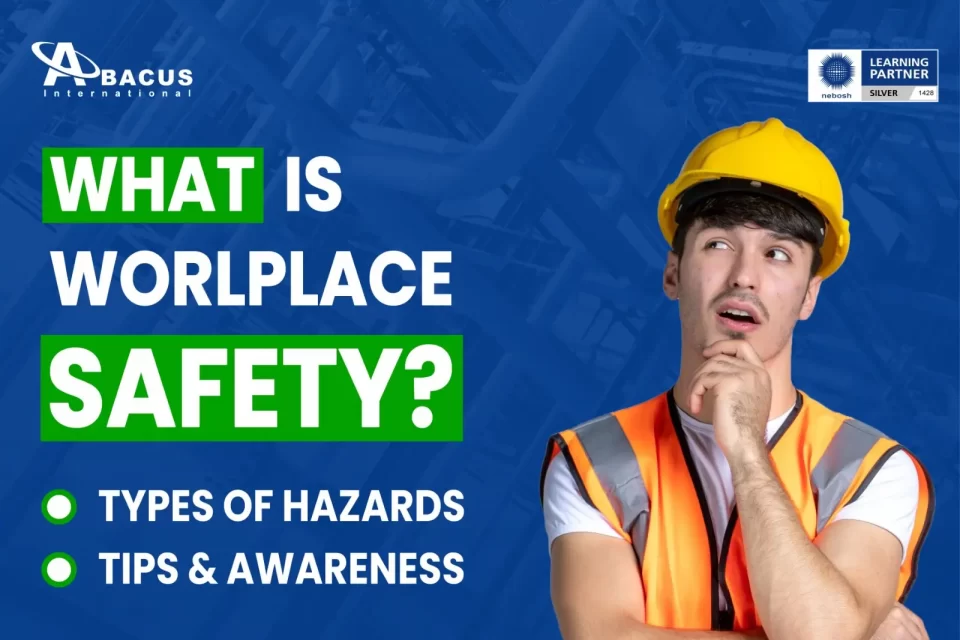What is Workplace Safety?
Workplace safety is policies and practices used to provide a safe and secure work zone for Employers and Employees. Workplace safety is a top concern for everyone. Employers must take all possible actions to ensure worker safety. Making sure everyone stays safe isn’t just a rule—it’s the right thing to do.
Why Safety is important in the workplace?
In every workplace, safety is a priority. When a company takes safety seriously, it protects the company’s reputation, shields workers and equipment, and increases productivity. Neglecting to implement safety protocols by companies might result in dangerous working environments that might harm company property.
A safe workplace,
- Save many lives
- Job Satisfaction
- High Performance
- More Productivity
- Fewer absence rates
- Increases staff confidence
- Improve organization reputation
- Lower healthcare and insurance cost
- Decrease the Risk of accidents and injuries
Compulsory According to Law:
Employers are required to take precautions to ensure that their workers are safe while at work. Protecting worker’s welfare, safety, and health from all risks and hazards at work is a top priority according to the 1994 OSHA standard.
Who’s responsible for keeping the workplace safe?
In some organizations, it’s the responsibility of the human resources (HR) department to manage safety. If there’s no HR department, supervisors and managers take charge of safety at the workplace. However, it is the responsibility of everyone to keep the workplace safe and healthy.
Types of Hazards at the workplace
There are many types of safety hazards in the workplace, including electrical and chemical hazards, biological, physical, mechanical, and psychological. Risk Assessment is important to identify hazards and make sure the workplace is safe. These hazards need to be carefully managed and controlled to prevent harm to people, the environment, and property.
The Occupational Safety and Health Administration (OSHA) has outlined the obligations of employers in managing workplace safety risks. The employer is required to safeguard its employees from any hazardous conditions that may exist in the workplace.
Common workplace hazards:
- Trips, slips, falls
- Water spills
- Work at height
- Electric shocks
- Confined Space
- Heat or cold stress
- Excessive noise levels
- Exposure to dangerous chemical
- Lack of proper maintenance or repair
- Lack of proper ventilation leads to poor air quality
How to Make Workplace Safe?
Organizations prioritize workplace safety to protect employees and lower the chance of accidents. The following are some practical strategies for creating a safe and secure workplace.
Workplace Safety Tips Every Employee Should Know:
1) Pay Attention to your Surrounding
Every workplace has risks, like machines or clutter. To stay safe, spot dangers and pay attention. Being aware helps you and your colleagues stay safe at work.
2) Install smoke detection and fire alarm
Make sure that fire alarms and smoke detectors are installed. They alert you in the early stages when they detect smoke or fire, allowing you time to escape and call for help. These alarms protect you from workplace fires.
3) Good Posture When lifting and Sitting
Good posture isn’t just for lifting heavy things; it’s important for everyone, even desk workers. Use ergonomic desks and keyboards to avoid your wrists and arms strain. Poor posture can cause strain on your back, neck, and shoulders, which can lead to serious injury.
4) Regular Breaks
It’s important to take your regular breaks, according to the Occupational Health and Safety Administration (OSHA) tired workers are mostly the cause of incidents because they are less aware. Try to schedule your more difficult task at the start of the day when you’re more alert.
5) Warnings and Safety Signs
It’s important to display warnings and safety signs around the workplace. There signs provide information about possible hazards, emergency procedures, and safety precautions for everyone in the workplace. Place them in visible locations, this helps to raise awareness and remind everyone to prioritize safety all the time.
6) Always Follow Procedures, No Shortcuts
Workplace procedures are there to keep you safe, so follow them carefully, especially with heavy machinery. Taking shortcuts can lead to injuries and isn’t worth the time saved. Always use the correct tool for the task and use it the right way.
7) Be Aware of new Safety Protocols
When your company gets a new machine or updates training, learn the new safety rules. Safety at work is a team effort. Employers provide training, supervisors schedule it, and employees follow it. If you’re unsure about a safety rule, ask questions before using a new machine.
8) Keep Emergency Exits Clear
Don’t block emergency exit doors, not even for a short time. It’s common sense, but many things like ladders and carts end up in front of exits. Also, keep pathways to equipment shut-offs clear for quick access in case of emergency.
9) Report Unsafe Conditions
To prevent unsafe conditions, report them to supervisors right away and help find solutions. Supervisors must ensure a safe workplace, but they need to know about hazards. Always report any dangerous situations or behavior to keep everyone safe. Working together to fix problems creates a safer workplace for everyone.
10) Personal Protective Equipment (PPE)
Always wear Personal protective equipment (PPE) at the workplace. PPEs are items that protect you from injury, such as masks, gloves, goggles, and helmets. Using the proper PPEs can keep you safe and prevent accidents.
Read more: Personal Protective Equipment (PPEs).
Workplace Safety Awareness, and Training
Raising workplace safety awareness is important to creating a safe and secure culture for a company. Regular training sessions empower employees to identify hazards proactively. The following health and safety courses are suggested help to establish a secure work environment, offer appropriate training, and raise awareness of workplace safety:

